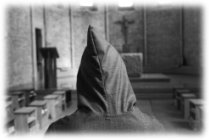The phrase “mediating structures” was in recent decades popularized by Peter Berger and Richard John Neuhaus, but the concept has been fundamental to conservative thought since Edmund Burke. The term refers to the social groups and associations that lie between the individual and the state—the family, parish, guild, village, voluntary associations, and all other such local and parochial communities. At times, such groups are also referred to as “intermediate” or “secondary” groups, as in the writings of Alexis de Tocqueville. Whatever the precise language employed, the defense of mediating structures has been essential to modern conservatism, and, while certain liberals (such as J. S. Mill) and radicals (especially P. J. Proudhon and P. Kropotkin) have mounted at least tepid defenses of mediating structures, conservatism has been both more consistent and more vigorous than either liberalism or radicalism in efforts to preserve the corporate rights of social groups.
Burke first stated the conservative case for mediating structures in his Reflections on the Revolution in France (1790). Burke observed that the French revolutionaries subscribed to a version of modern natural law that refused to recognize the salutary influence of any traditional social institution. The Jacobins believed that rights reside within individuals and that there are no legitimate interests beyond the particular interests of individuals and the national interest. Accordingly, the revolutionaries abolished the guilds, attacked the monasteries, institutionalized divorce, bound the clergy to the Revolution by oaths, and eliminated primogeniture and other laws protecting family property. As Burke discussed in the Reflections, the revolutionaries also redrew districts according to population size and geometric symmetry in order that “the people would no longer be Gascons, Picards, Bretons, Normans but Frenchmen.” Burke says, however, that instead of being Frenchmen with one country and one heart, the people “will have no country. No man ever was attached by a sense of pride, partiality or real affection to a description of square measurement. We begin our public affections in our families . . . [,] we pass on to our neighborhoods, and our habitual connections. . . . The love of the whole is not extinguished by this subordinate partiality.” Indeed, Burke asserted that “to love the little platoon we belong to in society is the first principle (the germ as it were) of public affections."
To disband the little platoons is to foster individual “weakness, disconnection and confusion,” according to Burke. Mediating structures provide the individual guidance through custom, tradition, and habitual practices—“the coat of prejudice.” In a word, Burke believed that mediating structures militate against what Tocqueville in the next century called “individualism."
Tocqueville was preoccupied with the dangers of the loss of mediating structures, especially civil associations. In Democracy in America (1835), he describes “individualism” and the centralization of state power as rising in tandem, both rooted in the passion for equality. According to Tocqueville, the individual and the state are not opposed to one another. Rather, they are reinforcing poles, each opposed to the social groups and associations lying between them. The state secures individual rights and, without mediating structures to buffer the individual, the individual looks to the state to secure his needs—including the need for community. Tocqueville maintained that individualism fosters “democratic despotism” and that the centralized state vanquishes mediating structures, isolating individuals. Conversely, and more optimistically, Tocqueville argued that mediating structures simultaneously combat the chief evils of democratic egalitarianism—individualism and the overweening, tutelary state.
Much of modern thought has been hostile to mediating structures. For example, Hobbes, Rousseau, and Bentham each envisioned an ideal condition in which the state guards the rights and fulfills the needs of unencumbered, desocialized individuals. Nonetheless, recently in America the rhetoric of “community” has become commonplace, even fashionable. At times this rhetoric has certainly been abused, as in the widely noticed Habits of the Heart (1985), a book by Robert Bellah and several others that used the language of community to justify an egalitarian state dedicated to the redistribution of property. But such rhetoric is clearly not always disingenuous, and the recent concern with “community,” “civil society,” and “mediating structures” bespeaks a genuine and profound presence of conservatism in America today. Indeed, the strength of concern for mediating structures in any modern society is an excellent barometer for measuring the vigor of that society’s conservative philosophy.
Burke first stated the conservative case for mediating structures in his Reflections on the Revolution in France (1790). Burke observed that the French revolutionaries subscribed to a version of modern natural law that refused to recognize the salutary influence of any traditional social institution. The Jacobins believed that rights reside within individuals and that there are no legitimate interests beyond the particular interests of individuals and the national interest. Accordingly, the revolutionaries abolished the guilds, attacked the monasteries, institutionalized divorce, bound the clergy to the Revolution by oaths, and eliminated primogeniture and other laws protecting family property. As Burke discussed in the Reflections, the revolutionaries also redrew districts according to population size and geometric symmetry in order that “the people would no longer be Gascons, Picards, Bretons, Normans but Frenchmen.” Burke says, however, that instead of being Frenchmen with one country and one heart, the people “will have no country. No man ever was attached by a sense of pride, partiality or real affection to a description of square measurement. We begin our public affections in our families . . . [,] we pass on to our neighborhoods, and our habitual connections. . . . The love of the whole is not extinguished by this subordinate partiality.” Indeed, Burke asserted that “to love the little platoon we belong to in society is the first principle (the germ as it were) of public affections."
To disband the little platoons is to foster individual “weakness, disconnection and confusion,” according to Burke. Mediating structures provide the individual guidance through custom, tradition, and habitual practices—“the coat of prejudice.” In a word, Burke believed that mediating structures militate against what Tocqueville in the next century called “individualism."
Tocqueville was preoccupied with the dangers of the loss of mediating structures, especially civil associations. In Democracy in America (1835), he describes “individualism” and the centralization of state power as rising in tandem, both rooted in the passion for equality. According to Tocqueville, the individual and the state are not opposed to one another. Rather, they are reinforcing poles, each opposed to the social groups and associations lying between them. The state secures individual rights and, without mediating structures to buffer the individual, the individual looks to the state to secure his needs—including the need for community. Tocqueville maintained that individualism fosters “democratic despotism” and that the centralized state vanquishes mediating structures, isolating individuals. Conversely, and more optimistically, Tocqueville argued that mediating structures simultaneously combat the chief evils of democratic egalitarianism—individualism and the overweening, tutelary state.
Much of modern thought has been hostile to mediating structures. For example, Hobbes, Rousseau, and Bentham each envisioned an ideal condition in which the state guards the rights and fulfills the needs of unencumbered, desocialized individuals. Nonetheless, recently in America the rhetoric of “community” has become commonplace, even fashionable. At times this rhetoric has certainly been abused, as in the widely noticed Habits of the Heart (1985), a book by Robert Bellah and several others that used the language of community to justify an egalitarian state dedicated to the redistribution of property. But such rhetoric is clearly not always disingenuous, and the recent concern with “community,” “civil society,” and “mediating structures” bespeaks a genuine and profound presence of conservatism in America today. Indeed, the strength of concern for mediating structures in any modern society is an excellent barometer for measuring the vigor of that society’s conservative philosophy.

































No comments:
Post a Comment